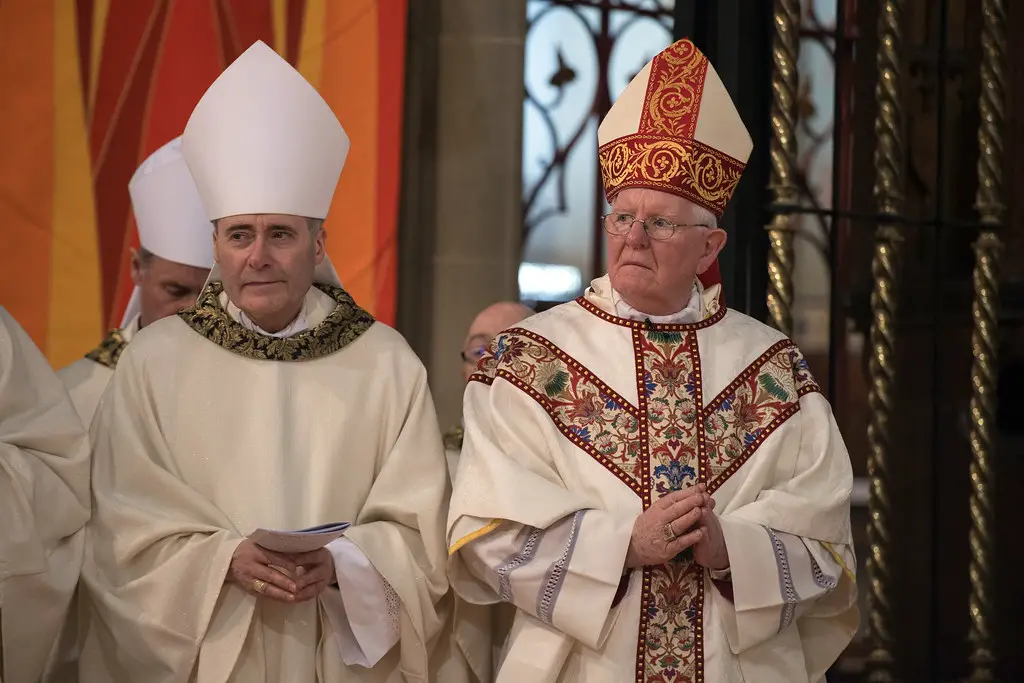Catholic facts
Differences and Similarities between Bishop and Auxiliary Bishop
Within the hierarchical structure of the Christian Church, there are distinct roles that bear significance in guiding the spiritual lives of the faithful. Among these roles are Bishops and Auxiliary Bishops. Both positions are marked by their responsibilities, authority, and ordination processes, yet they have distinct roles and functions within the Church. In this comprehensive exploration, we will delve deep into the differences and similarities between Bishops and Auxiliary Bishops, shedding light on their roles, functions, and significance within the Christian community.
Bishops: The Spiritual Shepherds
Definition: Bishops are esteemed clergy members within various Christian denominations, known for their spiritual authority and leadership. The term “Bishop” is derived from the Greek “episkopos,” signifying an overseer. Bishops typically preside over a specific geographic region known as a diocese and are responsible for the spiritual guidance of the local Church.
Ordination: To become a Bishop, one must undergo a special consecration that includes the laying on of hands by other Bishops. This ordination sets them apart for their distinctive role within the Church.
Responsibilities:
- Spiritual Oversight: Bishops are the spiritual overseers of their dioceses or regions. They provide guidance, leadership, and pastoral care to the clergy and congregations under their authority.
- Church Governance: Bishops play a crucial role in the governance of the Church. They have authority in matters of doctrine, discipline, and church administration within their diocese.
- Ordination and Confirmation: Bishops are responsible for ordaining new clergy and administering the sacrament of confirmation, a rite of initiation into the Church.
- Episcopal Vestments: Bishops are often distinguished by their distinct vestments, including the mitre (a pointed headdress), a crosier (a shepherd’s staff), and other regal attire.
Auxiliary Bishops: The Supportive Shepherds
Definition: Auxiliary Bishops are clergy members who assist the diocesan Bishop in the spiritual oversight and leadership of a diocese. They serve as auxiliary or assisting Bishops, sharing the responsibilities of the Bishop.
Ordination: Auxiliary Bishops undergo a similar episcopal ordination process to that of Bishops. They are consecrated through the laying on of hands, marking their role as auxiliary overseers.
Responsibilities:
- Supporting the Diocesan Bishop: The primary role of an Auxiliary Bishop is to assist the diocesan Bishop in the spiritual and administrative matters of the diocese. They share in the pastoral care of the faithful.
- Special Assignments: Auxiliary Bishops are often given specific assignments or responsibilities within the diocese by the diocesan Bishop. These assignments can include overseeing particular ministries or regions.
- Ordination and Confirmation: Like Bishops, Auxiliary Bishops may participate in the ordination of new clergy and the administration of confirmation.
Differences Between Bishops and Auxiliary Bishops
- Scope of Authority: The most significant difference lies in the scope of authority. Bishops oversee a diocese with full spiritual authority, while Auxiliary Bishops assist the diocesan Bishop and do not have independent diocesan leadership.
- Ordination Process: Both Bishops and Auxiliary Bishops undergo episcopal ordination, but Auxiliary Bishops are consecrated as assistants to the diocesan Bishop.
- Diocesan Leadership: Bishops have full diocesan leadership, making decisions on matters of doctrine, discipline, and administration. Auxiliary Bishops support the diocesan Bishop’s leadership.
Similarities Between Bishops and Auxiliary Bishops
- Ordination: Both Bishops and Auxiliary Bishops undergo a form of ordination that marks their roles as overseers within the Church.
- Spiritual Leadership: Both positions involve providing spiritual leadership, guidance, and pastoral care to the faithful, whether as the diocesan Bishop or as an assistant to the diocesan Bishop.
Conclusion
Bishops and Auxiliary Bishops, while distinct in their roles within the Christian Church, are united by their commitment to the spiritual well-being of the faithful. Bishops serve as spiritual overseers of a diocese, providing guidance and leadership to the local Church. Auxiliary Bishops, in contrast, support the diocesan Bishop, sharing in the pastoral responsibilities and assisting in various assignments. This arrangement emphasizes the hierarchical and collaborative nature of Church leadership, ensuring that the spiritual needs of the faithful are met and that the mission of the Church is fulfilled. Both Bishops and Auxiliary Bishops play integral roles in nurturing the faith and spirituality of the Christian community, embodying the Church’s mission to provide spiritual guidance, care, and support.
About Author
























